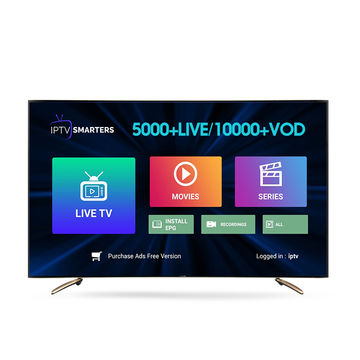Get Instant Access: IPTV Subscription for Your Favorite Reveals and Movies
Get Instant Access: IPTV Subscription for Your Favorite Reveals and Movies
Blog Article
Just How IPTV Works: A Step-by-Step Guide to Web Protocol Television Technology
Web Protocol Television (IPTV) has actually transformed the means we take in television content, using a brand-new realm of possibilities via the power of the net. Understanding the details of how IPTV works can drop light on the modern technology that drives this innovative type of media delivery. From the fundamental concepts of IPTV to the complex process of content delivery, each action plays an essential role in making sure a smooth viewing experience. In this guide, we will discover the hidden mechanisms that make IPTV a fascinating combination of modern technology and entertainment.
IPTV Fundamentals
In comprehending IPTV fundamentals, it is essential to comprehend the essential functions of this innovation in providing television content online. IPTV, which means Internet Protocol Tv, makes use of Net Method (IP) networks to send tv material to users' devices. Unlike traditional approaches of relaying tv material with cable or satellite signals, IPTV streams media through high-speed net links.

Furthermore, IPTV permits for interactive capacities, such as video as needed (VOD) and digital program guides (EPG), enhancing the customer experience by providing even more control and versatility in accessing content. Overall, recognizing the fundamentals of IPTV establishes the structure for exploring its advanced functionalities and the advantages it uses to modern tv consumption.
Web Content Delivery Refine
Reliable content shipment in IPTV systems entails a well-structured process that guarantees smooth transmission of tv content over IP networks. The material shipment procedure in IPTV starts with the production of the video content, which is after that inscribed right into electronic style ideal for IP transmission.

Middleware Capability
With the assimilation of middleware, IPTV systems gain enhanced performance that streamlines individual communication and material management. One of the vital features of middleware in IPTV is to enable individualized customer experiences by providing attributes such as interactive program overviews, video-on-demand services, interactive advertising and marketing, and user preferences management.

Device Compatibility
Given the pivotal role of middleware in enabling seamless interaction and content management in IPTV systems, an important element to think about is the compatibility of devices used for accessing the IPTV services. Tool compatibility is vital for guaranteeing a smooth individual experience and optimal efficiency when accessing IPTV web content.
In the context of IPTV, gadget compatibility refers to the ability of a device to properly connect with the IPTV solution, present content correctly, and sustain the needed protocols and codecs for streaming video content online. Various devices, such as clever TVs, set-top boxes, smartphones, tablet computers, and computer systems, may have differing levels of compatibility with IPTV services.
To guarantee a seamless watching experience, it is essential for customers to select tools that work with the particular IPTV solution More about the author they are using. Furthermore, IPTV service suppliers should offer assistance for a vast array of gadgets to cater to the visit homepage diverse needs of their customer base. By focusing on tool compatibility, both individuals and provider can improve the total IPTV experience.
Top Quality of Solution (QoS)
Taking into consideration the vital function of keeping a high requirement of performance and dependability in IPTV systems, making certain constant High quality of Service (QoS) remains a basic element of the customer experience. QoS in IPTV describes the capacity of the system to supply web content with marginal disruptions, high resolution, and quickly packing times. To attain ideal QoS, numerous variables require to be dealt with. Network data transfer is critical to support high-quality video clip streaming without buffering or pixelation. In addition, latency, jitter, and package loss must be lessened to improve the checking out experience.
Provider use QoS systems such as web traffic prioritization, buffering, and error correction to maintain a stable IPTV solution. By focusing on IPTV traffic over less time-sensitive data, service providers can make certain smooth playback even during top use hours. Buffering aids make up for network changes, while error correction strategies improve data stability.
Continual monitoring and optimization of QoS parameters get more are vital to adjust to altering network conditions and user demands. Ultimately, a durable QoS framework is essential for providing a smooth and delightful IPTV experience to users.
Final Thought
Finally, IPTV operates with the transmission of tv material over internet procedure networks. The innovation involves an organized procedure of web content shipment, facilitated by middleware functionality to ensure compatibility throughout various devices. High quality of Solution plays an important function in maintaining the effectiveness and dependability of IPTV solutions. Comprehending the fundamental concepts of IPTV is necessary for grasping the ins and outs of this cutting-edge tv technology.
Report this page